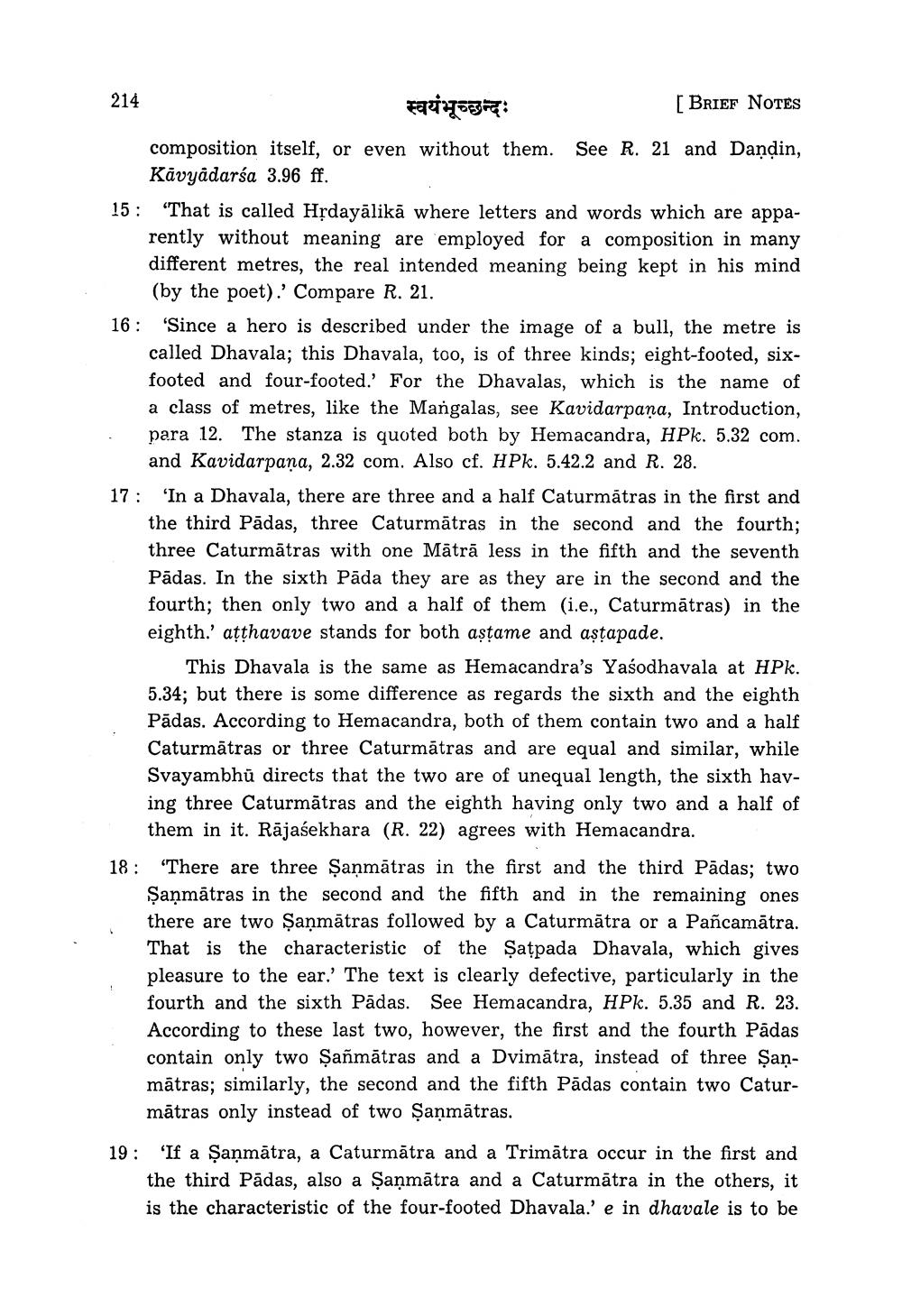________________
214
स्वयंभूच्छन्दः
[BRIEF NOTES composition itself, or even without them. See R. 21 and Dandin,
Kavyadarśa 3.96 ff. 15: "That is called Hrdayālikā where letters and words which are appa
rently without meaning are employed for a composition in many different metres, the real intended meaning being kept in his mind
(by the poet).'Compare R. 21. 16: "Since a hero is described under the image of a bull, the metre is
called Dhavala; this Dhavala, too, is of three kinds; eight-footed, sixfooted and four-footed.' For the Dhavalas, which is the name of a class of metres, like the Mangalas, see Kavidarpana, Introduction, para 12. The stanza is quoted both by Hemacandra, HPk. 5.32 com.
and Kavidarpana, 2.32 com. Also cf. HPk. 5.42.2 and R. 28. 17: 'In a Dhavala, there are three and a half Caturmātras in the first and
the third Pādas, three Caturmātras in the second and the fourth; three Caturmätras with one Mātrā less in the fifth and the seventh Pādas. In the sixth Pāda they are as they are in the second and the fourth; then only two and a half of them (i.e., Caturmātras) in the eighth.' atthavave stands for both astame and astapade.
This Dhavala is the same as Hemacandra's Yasodhavala at HPk. 5.34; but there is some difference as regards the sixth and the eighth Pādas. According to Hemacandra, both of them contain two and a half Caturmātras or three Caturmātras and are equal and similar, while Svayambhū directs that the two are of unequal length, the sixth having three Caturmätras and the eighth having only two and a half of
them in it. Rājasekhara (R. 22) agrees with Hemacandra. 18: 'There are three Şanmātras in the first and the third Pādas; two
Şanmåtras in the second and the fifth and in the remaining ones there are two Şaņmātras followed by a Caturmātra or a Pañcamātra. That is the characteristic of the Şațpada Dhavala, which gives pleasure to the ear.' The text is clearly defective, particularly in the fourth and the sixth Pādas. See Hemacandra, HPk. 5.35 and R. 23. According to these last two, however, the first and the fourth Pādas contain only two Şañmātras and a Dvimātra, instead of three Şanmātras; similarly, the second and the fifth Pādas contain two Caturmātras only instead of two Şaņmātras.
19: 'If a Şaņmātra, a Caturmātra and a Trimātra occur in the first and
the third Pādas, also a Șaņmātra and a Caturmātra in the others, it is the characteristic of the four-footed Dhavala.' e in dhavale is to be




